#goddess diana
Text


Actaeon transformed into a stag by Diana for daring to peek on her while she was bathing (Ovid, Metamorphoses)
#photoblog#italycore#mythology#greek mythology#diana and actaeon#diana#goddess diana#garden#gardencore#reggia di caserta#royal palace#cottage garden#fountain#waterfall#naturecore#natureporn#neoclassical#neoclassic#sculpture#carving#greek gods#ancient greek#fairy#fairy tales#fairycore#dreamcore#cottagecore#cottage aesthetic#aesthetic#fairy cottage
21 notes
·
View notes
Text
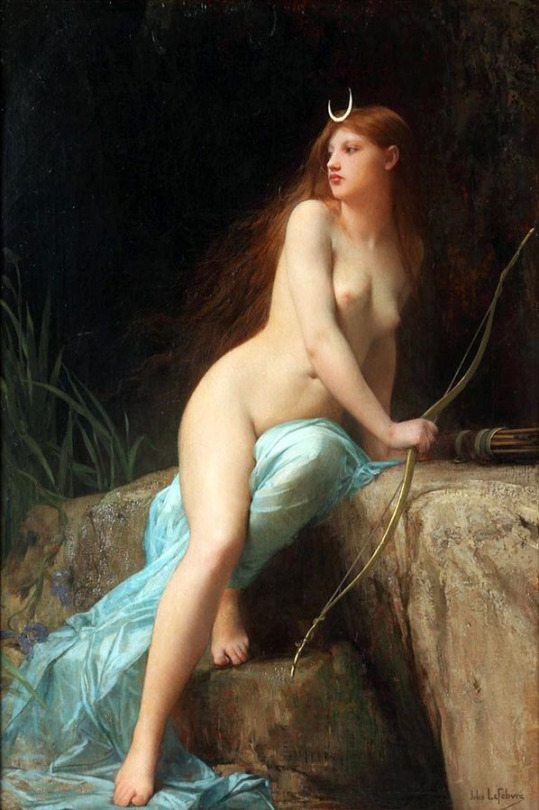
Jules Joseph Lefebvre (1836-1911)
"Diana"
#paintings#art#artwork#mythological painting#roman mythology#jules joseph lefebvre#fine art#french artist#female portrait#portrait of a woman#female figure#red hair#diana goddess#goddess diana#1800s#19th century#aesthetic#aesthetics#1k#2k#3k#4k
5K notes
·
View notes
Text

Unknown, The Goddess Diana
Wall painting, Pompeii
821 notes
·
View notes
Text

Apollo and Diana, an 1848 marble statue by American artist and sculptor Thomas Crawford.
This captures their essence quite well imo!
#artemis#goddess artemis#goddess diana#marble statue#marble sculpture#apollo#apollon deity#god apollo#greek gods#greek mythology#ancient greek#greek history#roman mythology#roman gods#roman history#rome#spqr#Thomas Crawford#Diana#theoi
350 notes
·
View notes
Text
Artemis Phosphorus (Bringer of Light) ✨️
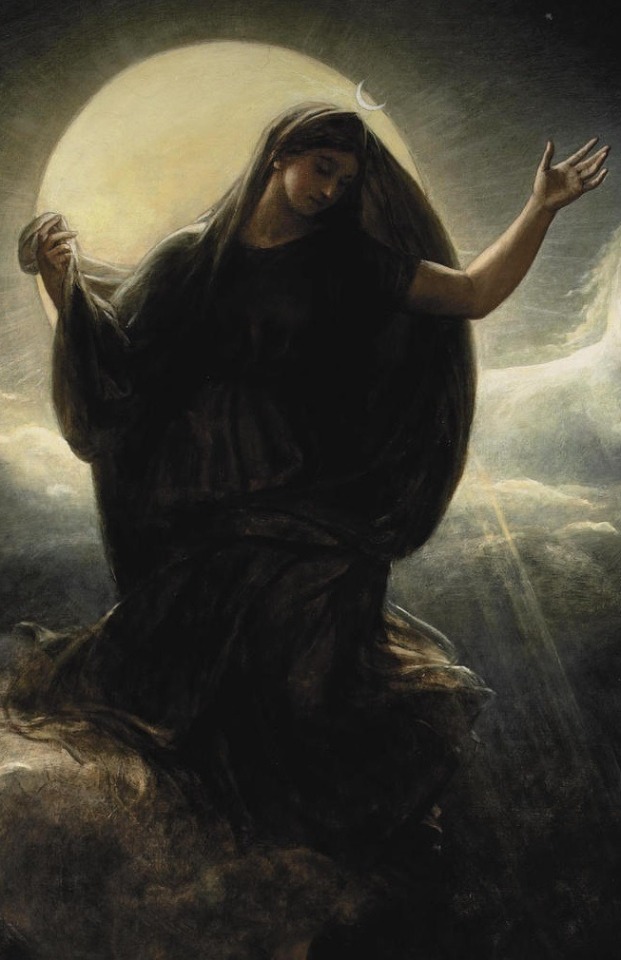
(Diana Awakening Apollo [1910] by Carl Bertling)
Callimachus refers to Artemis as “Queen” and asserts that when Artemis was a young girl sitting on her father Zeus’ knees, asking him to allow her to keep her maidenhood forever and receive her bow and arrows, she also asked him to be Phosphorus, or “Bringer of Light,” which became one of her many titles (Callimachus, Hymn 3.1). One of her most popular temples as “Bringer of Light” is at Messene in the sanctuary of Asclepius (Pausanias 4.31.10).
Zeus is more than delighted to give her all that she asks for: “three times ten cities and towers more than one live vouchsafe thee — three times ten cities that shall not note to glorify any other god but to glorify the only and be called of Artemis. And thou shall be Watcher over Streets and Harbors” (Callimachus, Hymn 3.28).
Thus, in addition to her being Phosphorus, she is also Enodia, “Protector of the Mariners.” Consequently, Artemis is not only “Saviour” through mercy — that is, people do not only pray to her for protection and peaceful death — but she is “Saviour” in a way that is omnipresent. As the “Bringer of Light,” her luminance literally saves ships, harbors, and all those who depend on these facilities to survive. In her role as Sôteira, Artemis inhabits the personal spaces of her community of worshipers.
As a goddess of mercy, she is invoked as Phôsphoros, meaning “Bringer of Light,” and she is often Hêmerasia or “She Who Soothes.” ... it is significant that her ritual worship expanded from “Huntress,” or goddess of wilderness, to the “Saviour” of her supplicants and the “Protector” of communities and cities.
- She Who Hunts: Artemis: The Goddess Who Changed the World by Carla Ionescu
#artemis#diana#Carla Ionescu#goddess artemis#artemis goddess#artemis devotion#artemis devotee#artemis deity#hellenic polytheism#hellenic pantheon#hellenic gods#hellenic community#hellenic pagan#hellenic paganism#hellenic polytheist#hellenic worship#goddess diana#diana goddess#diana deity
401 notes
·
View notes
Text

Diana of Versailles, marble statue of the Roman goddess Diana. Also known as Artemis, Goddess of the Hunt (Greek mythology). Photo by Margot Noyelle.
#mine#uploads#diana#goddess diana#artemis#goddess artemis#sculpture#roman mythology#greek mythology#the louvre#r
184 notes
·
View notes
Text
EARTH GODDESS / HORNED GOD
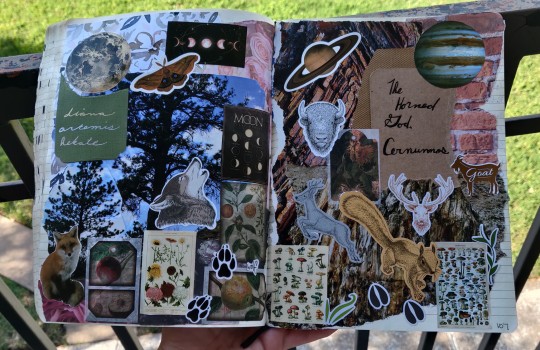

altars to-go
#this is a page from my own personal#grimoire#digital grimoire#witchcraft#witchblr#witch#baby witch#hekate#artemis#diana#goddess#goddess diana#the horned god#cernunnos#diety#altar#book of shadows#witchling#collage art#collage#craftblr#moon#moon phases#jupiter#saturn#upg#roaenpost
74 notes
·
View notes
Text
Consider the myths which surround this revelation. We believe a woman is naturally modest, ashamed of her own body, afraid by nature to reveal her flesh. And on the other hand, we believe the sight of this flesh has a transformative effect on the mind of a man. That if a woman shows a bit of her legs, or her shoulder, or even leans over so that a man may see where her breasts meet, that a man will be overcome with desire for her, and compelled almost, by this sight, to rape her. (A judge in Utah, for instance, overturned a jury's verdict of guilty against a rapist because his victim was "flimsily dressed." Thus behind female modesty there lurks the shape of an awesome female power.
For if a woman by her beauty can make a man into a rapist, she can also transform him in other ways. Her overwhelming seductive powers can lead him into the world of flesh and the devil. Desiring her, he forgets his soul. He moves into eternal perdition. And in this eternal perdition, he loses the eternal life of his spirit. The full weight of an earthly mortality falls upon his consciousness.
But we can read in this religious scenario another language and another range of meanings, which belong to the life of the psyche. When a woman's beauty brings a man into the realm of the material, he must live in his body. He must know himself as matter. Therefore, he must give up the illusion that his mind controls his body, or that culture controls nature. Rather, inside the experience of sexual knowledge, he learns that culture and nature, meaning and love, spirit and matter, are one. And in this he loses the illusion that culture has given him against the knowledge of the vulnerability of his own flesh.
And now if we move from the language of the psyche back to mythology, we can read myth in a new light. We have a new understanding, for example, of the story of Actaeon. We see him enter the forest looking for animal prey. He is the controller of nature; he is the hunter. But by accident, or we might say through fate, by the natural occurrence of circumstances, he comes upon the goddess Diana as she is bathing in a pool. We know that he is stunned by her beauty. And we also know that this moment of beauty will lead to his death. For the beautiful goddess will reach her hand into the water (a pool in which, like Narcissus, he must be able to see his own reflection), she will splash his face with this watery face, and he will turn into an animal. Now we know the rest of his story. As a stag, he runs through the forest. But the scent of his animal body is detected by his own hunting dogs. And thus these animals, which were his own (and which belonged to his psyche), will now tear him to pieces.
The idea that the sight of a woman's body calls a man back to his own animal nature, and that this animal nature soon destroys him, reverberates throughout culture. We find it in the most ancient sources. In the Biblical story of creation, we discover Eve, who has spoken with a serpent, seducing Adam into eating an apple, the forbidden fruit of knowledge. Through this seduction, the commentators tell us, "Eve brought death into the world."
-Susan Griffin, Pornography and Silence: Culture’s Revenge Against Nature
#susan griffin#misogyny#goddess diana#goddess artemis#actaeon#adam and eve#female oppression#male fragility
35 notes
·
View notes
Text
my girl❤️🔥🏹🌙

“The Goddess Diana with a Lion” 1848-1925 Angelo Von Courten. oil on canvas.

“Diana Cacciatrice (Diana the Huntress)” 1658 by Guercino. oil on canvas.

“Diana” 1879 by Jules Joseph Lefebvre. oil on panel.
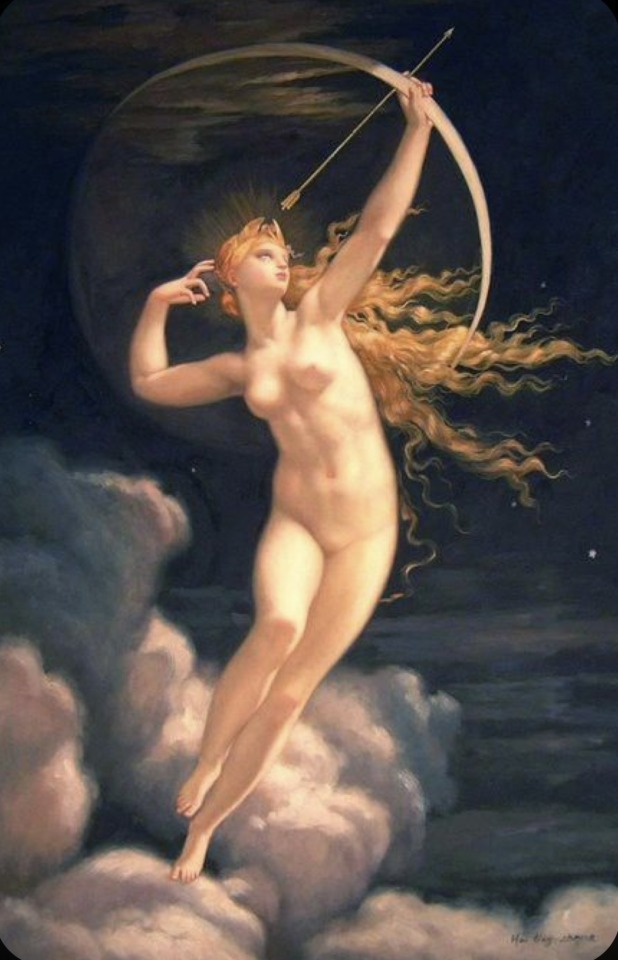
“Selene” 1874 by Jules Louis Machard. oil on canvas
#diana#artemis#selene#goddess#goddess diana#greek gods#greek goddess#greek mythology#art#oil painting#oil on canvas#oil on panel
52 notes
·
View notes
Text

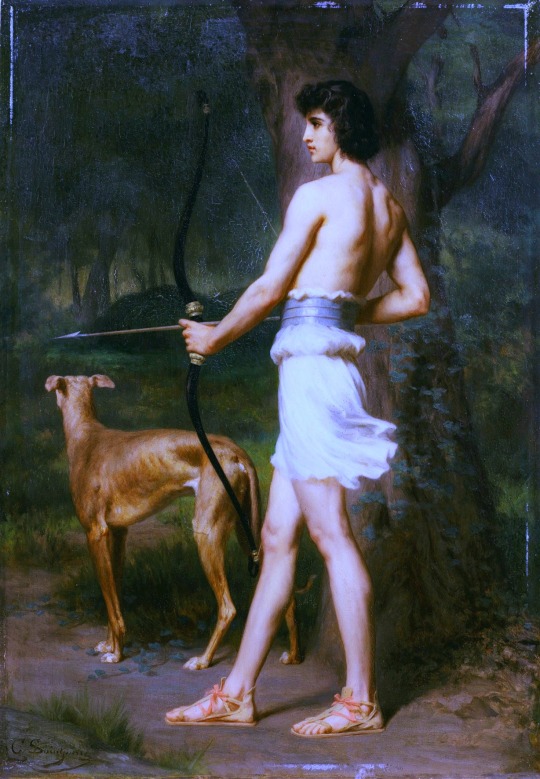

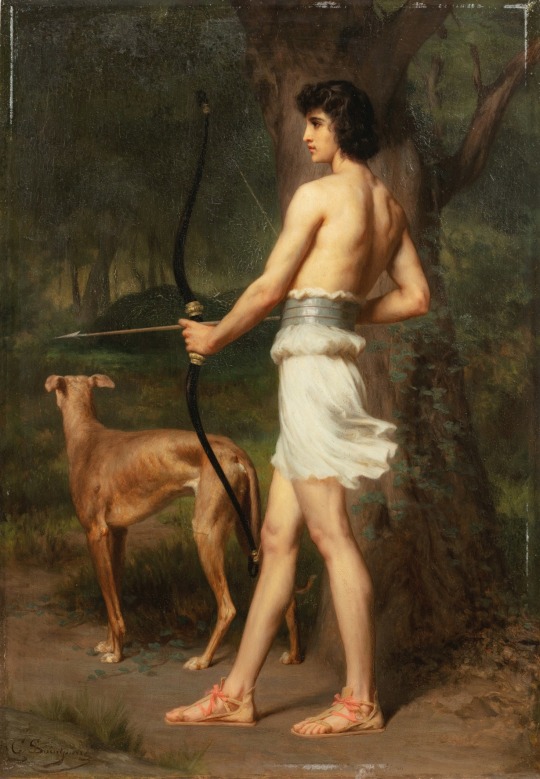
Gaston Casimir Saint-Pierre (French, 1833-1916), Diana and Actaeon (a pair), oil on panel, no date. Top row digitally enhanced, bottom row on Sotheby's.
20 notes
·
View notes
Text
My Devotion to Our Lady is getting stronger every day!!
It's brilliant knowing Our Lady is always there for me.
She's my Mother. My Queen. My Hope.
I've kinda lost contact with Hecate and Artemis and Diana and Hera... they're like step mums or cousins that live ages away, ya know?
Still there but i rarely see them.
#our lady#queen of the heavens#queen of heaven#hecate deity#mother mary#marian devotion#marian worship#mary deity#deity worship#artemis deity#diana deity#goddess diana#goddess of the hunt#the goddess#horned goddess#mother of god#mother of all#mother god#mother goddess#deanism#dèanism#dea#hellenic polytheism#folk catholicism#cunning folk#filianism#oceannotfound blogs#blessed mother#blessed virgin mary
7 notes
·
View notes
Text
Random post of the day for something I just realized now. The famous Diana of Versailles's sandals look like leaves. I love that detail!
#Diana of Versailles#diana#diana goddess#goddess diana#artemis goddess#artemis#goddess artemis#artemis diana#feral artemis#greek mythology#roman mythology#greek gods#greek goddess#roman goddess
7 notes
·
View notes
Text
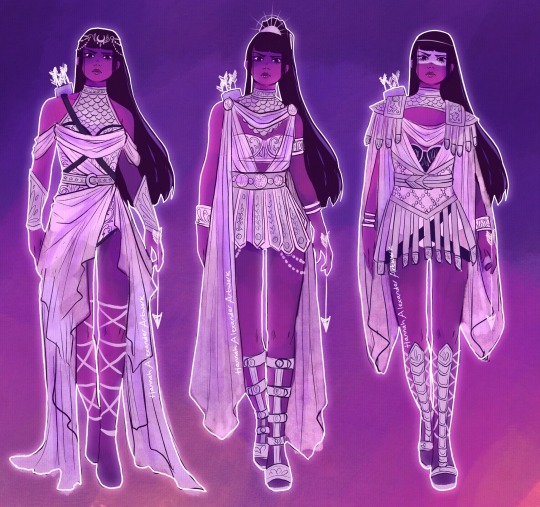
Things I dislike: Lore Olympus.
Things I like: This fan depiction of Artemis from Lore Olympus.
The sauce is Artist Hannah Alexander on X… This is an amazing work so please show them some love!

#artemis#ancient greece#greek mythology#greek gods#lore olympus#ancient rome#roman gods#roman mythology#goddess diana#goddess artemis#theoi
83 notes
·
View notes
Text
What is 'Charisteria'?
The Festival of Lady Artemis + Lord Ares

(Photo credit: BBC)
***tw: animal harm and animal sacrifice***
One of the more popular festivals to Artemis is the Charisteria (“thanksgiving”), which took place on the sixth day of Boedromion (September).
According to Herodotus, there was already a long-standing, ancient celebration on this day for the goddess Artemis (and her brother Apollo), however, at some later time, the festival was enlarged and became associated with the Battle of Marathon.
The Greeks honoured their victory over the Persians by celebrating the goddess who brought them victory...
...Miltiades, an Athenian warrior who is often credited with devising the tactics that defeated the Persians at the Battle of Marathon, is said to have been the first to offer sacrifice to Artemis on the day of her ancient feast. Pausanias tells us that, as part of this same festival, 500 goats were sacrificed to Artemis Agrotera and Ares Enyalios.
The goats were taken into the temple on Ilissos in a ceremonial procession and sacrificed collectively. It was said that each goat was meant to represent a fallen Persian soldier, but that so many Persians had died in the battle that doing so would have culled the entire goat population.
What makes this festival especially interesting is that the sacrifices were offered at a temple of Artemis and Ares, which is a unique collaboration by these two divinities and speaks widely to their elated position in battle worship and war.
- She Who Hunts: Artemis: The Goddess Who Changed the World by Carla Ionescu
#tw: animal harm#artemis#Carla Ionescu#artemis deity#goddess artemis#artemis goddess#artemis devotion#artemis devotee#diana#goddess diana#diana goddess#diana deity#hellenic polytheism#helpol#hellenic community#hellenic pagan#hellenic gods#hellenic pantheon#hellenic paganism#hellenic polytheist#hellenic worship#animal sacrifice#tw: animal sacrifice
124 notes
·
View notes
Text
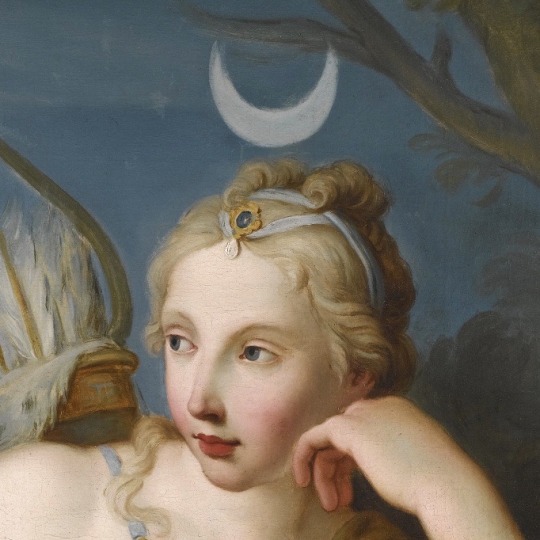


Diana, Goddess of the Hunt 🌙 as Depicted in the 18th Century
#art#baroque#18th century#goddess diana#artemis#andie original#i love 18th century portrayals of diana#jean honoré fragonard#antonio rotari#louis-michel van loo
24 notes
·
View notes
Text

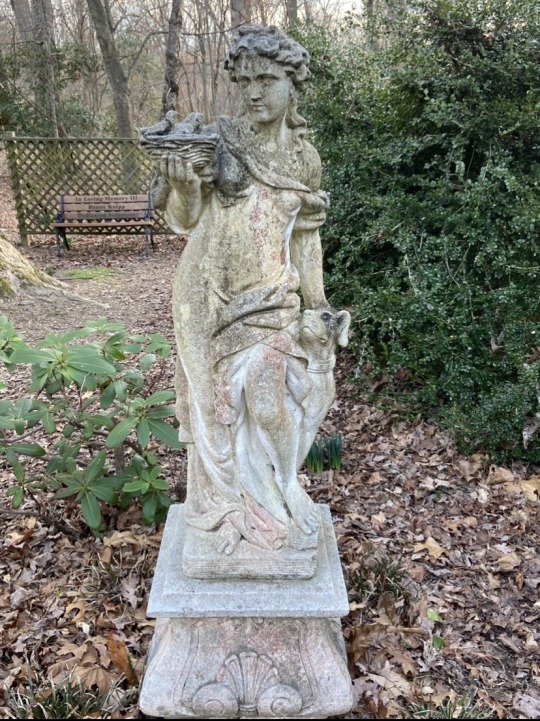


E offering to lady Diana made using my own pictures :3
24 notes
·
View notes